Expert Q&A: Dr. Line Rochefort
By Amy Nelson

How did you become interested in peat?
All my life I wanted to do something to reduce the impact we humans have on the environment. I first became trained as an ecologist in the toundra and for my Master’s degree, I looked at the impact of acid rain on peatlands in Canada. This work was through the Experimental Lakes Area, the research facility behind the acid rain research that got former Canadian Prime Ministers Pierre-Elliot Trudeau and Brian Mulroney and former U.S. President Ronald Reagan talking about reducing air pollution.
Tell me a little about the Peatland Ecology Research Group? When and why was it established?
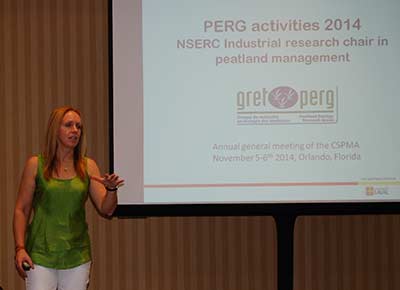
The group was started from a reflection that the peat industry had. At the end of the 1980s, people were beginning to become aware of the services provided by wetlands. The Canadian peat industry realized that they were using a resource and simply letting Nature takes its course, and they wondered if they should do any management. In 1992, the president of the Canadian Sphagnum Peat Moss Association, who was looking to the future and wanting the Association to do more for environmental stewardship, convened a workshop with the peat industry. I was then a newly appointed university researcher invited to the discussion. When you work with peatlands, you need to deal with plants, fauna, and hydrology. I learned from my experience at the Experimental Lakes Area that you can solve a lot more problems when you work as a team, so I decided to form a whole research group. I invited the best researchers from across the country. Nobody really knew how to restore or manage peatlands back then, so our idea was to train students who would go on to work for the government or other entities that would be making important decisions about peatlands.
In those early years, were you only focused on peatland bogs where peat was being extracted for horticultural use?
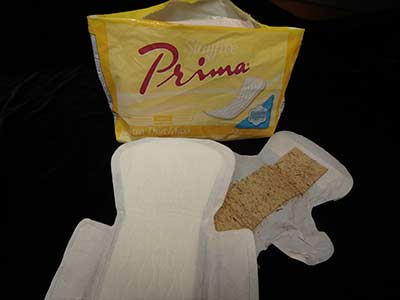
No. In addition to my work with the horticultural peat industry, I worked with Johnson & Johnson to try to cultivate the biomass of Sphagnum—that fantastic, absorbent, and odor-absorbent moss plant—for use in sanitary napkins. That work led to a product that ended up being sold in 80+ countries. After ten years, however, J&J decided to stop that program and restore the peatland they had impacted, which was in Sainte-Marguerite-Marie in the Lac Saint-Jean region. Ecological restoration of 695 acres site done over eight years proved to be very successful. In 2007 I was touring the site by helicopter with a mining company that was considering doing peatland restoration in Alaska and for a moment, I thought we were in the wrong place because you could not tell that that peat had ever been extracted there. Sandhill cranes are back nesting in that peatland now.
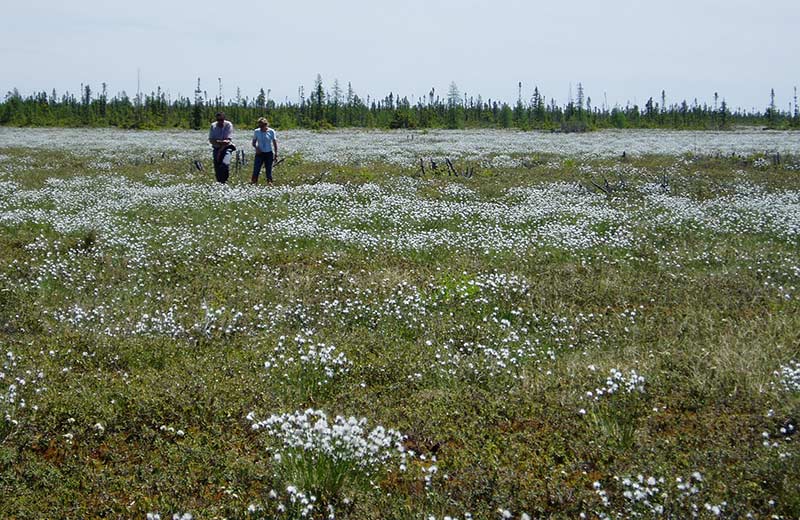
When is a peatland considered “restored?”
I just finished working on the corrections of a paper about this. [The article, titled “Declaring success in Sphagnum peatland restoration: Identifying outcomes from readily measurable vegetation parameters” will be published in Mires and Peat in the coming months.] It depends on the goal. Since the beginning, in North America, we have defined success as being able to re-establish the typical Sphagnum peatland plant community that can re-start the function of carbon sequestration. I wrote about this in a key paper in 2000. (Rochefort, L. 2000. Sphagnum – A keystone in habitat restoration. The Bryologist 103: 503-508.) Dr. Dale Vitt, my former Master’s thesis advisor, defined a restored peatland for the establishment of peatlands on mineral soils (Vitt, D.H., R.K. Wieder, B. Xu, and S. Koropchak. 2011. Peatland establishment on mineral soils: Effects of water level, amendments, and species after two growing seasons). But we are both in North America, and restoration depends so much on country and context.
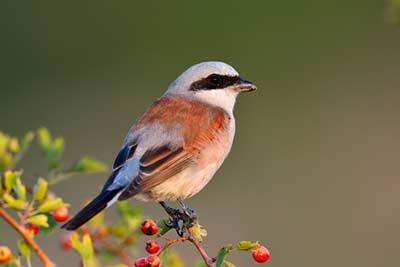
Mircea Bezergheanu, Dreamstime
In Europe, peatland restoration goals tend to be more related to biodiversity. A lot of that is driven by bird preservation or rare species protection. In the Netherlands, for example, the goal for some peatland restoration is to bring back the red-backed shrike (Lanius collurio). In other places in Europe, goals have been to get back a rare butterflies, or some orchids. Because I am trained as an ecologist, I prefer to work with the basement of the house before I start to think about putting woods and brick and things on top of it. For peatlands, the basement is Sphagnum (or in the case of fens, brown mosses and sedges). If I have the basement–the functioning community—in place, the rest will come. (I am, however, realizing that there are some plants that do not come back easily by themselves, and that is one of the things I am working on now.) The tricky question is when do you declare success?
How would you answer that question?
Answering that question requires a combination of knowing the physiology of your plants and knowing when you have an homogeneous extensive cover albeit low that it will take off and grow into a moss carpet. I have very high standards when I compare restored peatlands to natural ecosystems. But not everybody involved in peatland restoration will know, for example, the specifics of different species of Sphagnum, and they need criteria that are easier to work with. I was a member of a group that helped the government of New Brunswick establish their criteria, which is that after five years, at least 60% of the restoration site should have a permanent plant cover composed of typical peatland plants, 40% of which should be dominated by bryophytes, with at least 10% being Sphagnum mosses. In western Canada, Dale Vitt will tell you that to declare a restored acid peatland to be on a good trajectory, the desirable species (what I refer to as the peatland plant community) should be equal or greater than 50%, with a combination of bryophytes and vascular plants. The criteria in western Canada also states that non-peat forming species should be equal or less than 20% and that species richness should be equal or greater than seven species.
In general, how successful is peatland restoration?
I am lucky because I have studied, monitored, and been involved with 114 different peatland restoration projects and I have a long-term, 28-year database. I am now starting to see trajectories. Based on monitoring those projects, I have arrived at the conclusion that after five years, we have a 75% success rate with peatland restoration.
Is peatland restoration more successful, easier, or faster with certain types of peatlands, or when you are trying to recover from certain types of disturbances?
I find restoration of peatlands degraded by peat extraction easier. It’s like a solved problem. When you extract peat, and there’s some organic substrate left, it is not too difficult. Peatland restoration is easier in North America than in Europe, because in North America we have lots of propagules because there are still a lot of peatlands all around. If you are in the Netherlands or Ireland, on the other hand, there are not a lot of natural peatlands left, consequently they have to start producing your own propagules.
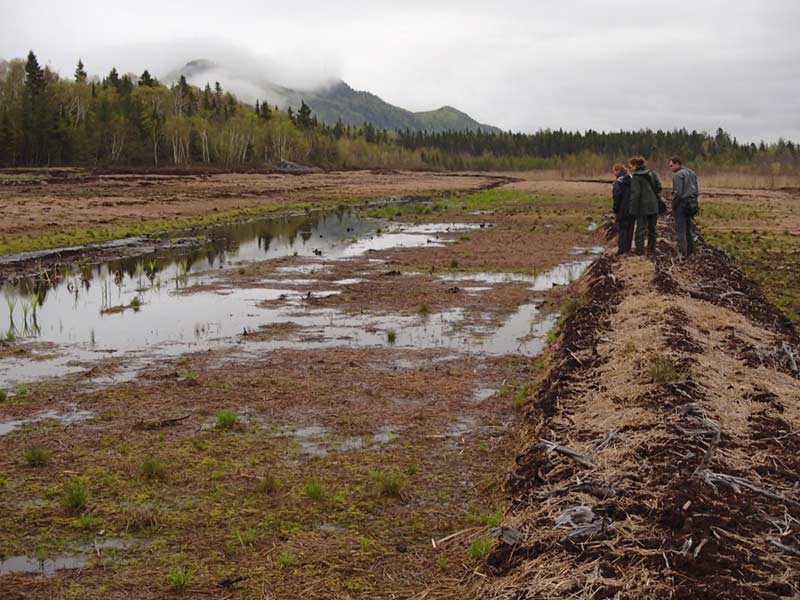
As far as type of peatlands, restoring peat swamps is very challenging. We still know very little about them. Working on peat swamp systems is like a Catch-22. You have late successional trees that develop on mounds, and then you need wet depressions. If you’ve destroyed all the microhabitats and you just have the substrate, how do you start? You can create the micro-topography, but then if you put the trees on the mounds, they burn in the sun and can’t colonize. It appears difficult to jump-start the restoration right away with the end-goal plant community; a longer series of successional plant community is usually needed. There are researchers studying peat swamp restoration in the Carolinas.
What makes a peatland site suitable for restoration? Is there a point at which a peatland cannot be restored?
I believe all peatlands can be restored, regardless of the type of disturbance. We have even restored peatlands that had been degraded by chemical spills following train derailments. We have restored peatlands degraded by well pads from fossil fuel extraction. If you have been mining under the peatland, or if you have open pit mining for petrol or minerals, then restoration becomes much harder. You still need certain hydro-geomorphological conditions for a peatland to work. You don’t start a peatland on a hill, for example. It has to be flat and have bad drainage. If you do not have that, then it is best to think about compensation somewhere else.
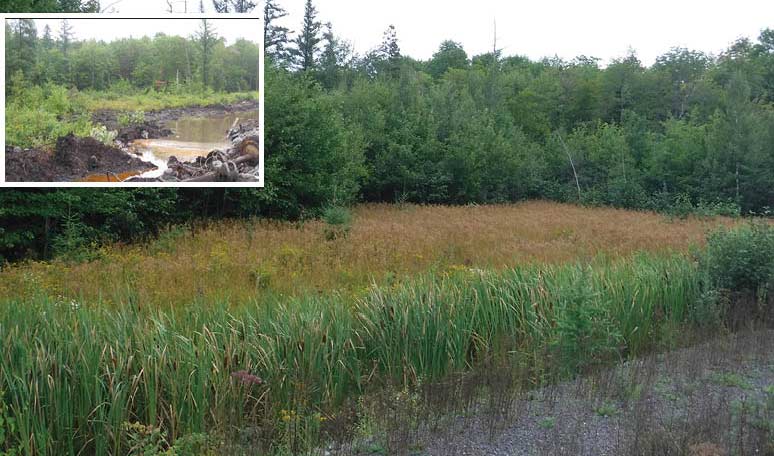
In 1997, you and your colleague Francois Quinty produced the Peatland Restoration Guide. In 2003, a second edition was published. I understand that this guide was created specifically for peat producers in North America, and it takes readers through all stages of restoration, from planning through monitoring. Does it deal with all types of peatlands, or just peatland bogs?
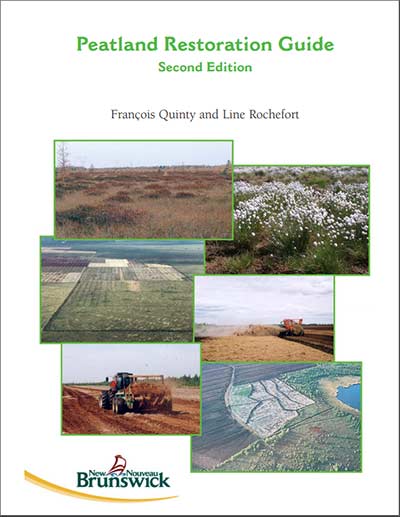 The Guide originally dealt mostly with Sphagnum peatlands. Now, with peatland restoration expanding to the prairies, where there are more fens, we are developing more techniques for peatland fens. We are currently working on the third edition, and that will include a section on restoring fens. The third edition will also address ways to manage and lessen the impact on the donor site. [Note: The third edition will be available this fall and next winter as each chapter is revised at two web sites: the PERG website and the peat producers website.
The Guide originally dealt mostly with Sphagnum peatlands. Now, with peatland restoration expanding to the prairies, where there are more fens, we are developing more techniques for peatland fens. We are currently working on the third edition, and that will include a section on restoring fens. The third edition will also address ways to manage and lessen the impact on the donor site. [Note: The third edition will be available this fall and next winter as each chapter is revised at two web sites: the PERG website and the peat producers website.
What can you tell us about the use of the Guide?
The peat industry in Canada is definitely using it. We do a technical transfer workshop for people in the peat industry–mostly those who are in the field supervising the machinery work—every year. But I know that it is used worldwide. They are using our techniques in Belgium, Ireland, England, Lithuania, Estonia, and Denmark. Every time I go to an international conference, some manager or some representative from a nature conservancy will come up and tell me how useful the Guide is.
In 2016, you co-authored a chapter in the book Peatland Restoration and Ecosystem Services: Science, Policy and Practice (which was co-edited by Hans Joosten, whom we also interviewed for this issue) entitled “A conceptual framework for ecosystem restoration applied to industrial peatlands.” Can you talk us through this framework?
This framework works for any type of ecosystem, not just peatlands. When I go to a degraded ecosystem, I first look at, and assess the condition of the residual abiotic and biotic conditions there. Then, I look at the undisturbed natural ecosystem in the same region (the reference ecosystem) and do a comparison. I compare the composition, structure, and function, just to see the ecological distance between the degraded and the undisturbed system. Then, I try to identify the species to target for restoring those aspects. The specific species will depend on the region. I also try to determine how to reduce environmental constraints, such as the site having been drained, as well as dispersal constraints on that target species. If you don’t reintroduce Sphagnum, for example, it does not come back easily by itself, even in rewetted sites. The conditions just may not be right for germination. I am fortunate because I can always assign lots of graduate students to work on many different restoration sites involving different situations and adapt the restoration approach. Then we monitor the sites to look at all the internal dynamics.
When it comes to actually beginning the restoration construction, what has to happen before you restore hydrology?
Sometimes I actually clean the drainage system to further drain it so that we can bring in the heavy machinery needed to reprofile the substrate. We need to create pools, contours, and terraces. Sphagnum is a little like growing rice in that you have to grow it in terraces that are flat to uniformly distribute the rewetting. Then we introduce the plants, place straw mulch, and apply a small amount of phosphorous so that the spores can germinate. Then, the last thing we do is block the drainage ditches to restore hydrology.
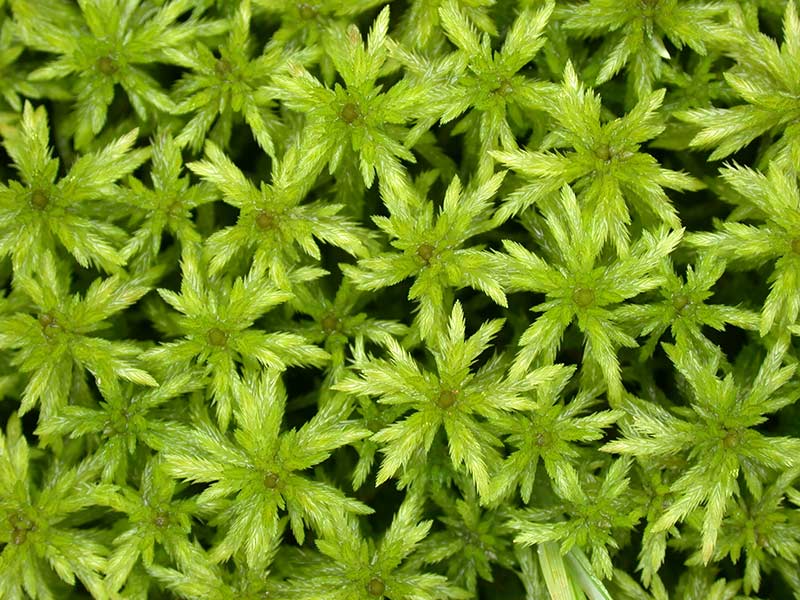
With climate change, carbon sequestration is likely to be an increasing driver for peatland restoration, but I read in one of your papers that projects involving the filling and blocking of ditches can result in the release of methane. Can you explain that?
At the Bois-des-Bel peatland (where the PERG conducts a long-term, whole-ecosystem bog restoration experiment) we put up eddy covariance towers, which measure carbon flux, for the first four years (post-restoration) and learned that at that point, the peatland was not yet a sink. So we know that we are reducing our carbon emission when a restored peatland is young and regenerating, but it is not yet positive all year round. More recently, a graduate student, Kelly Nugent, from McGill University installed towers at the same site for years 14, 15 and 16 (post-restoration), and all the data showed that the restored peatland had become a net carbon sink at an average of 78 g C m-2 yr-1 (net sequestration).
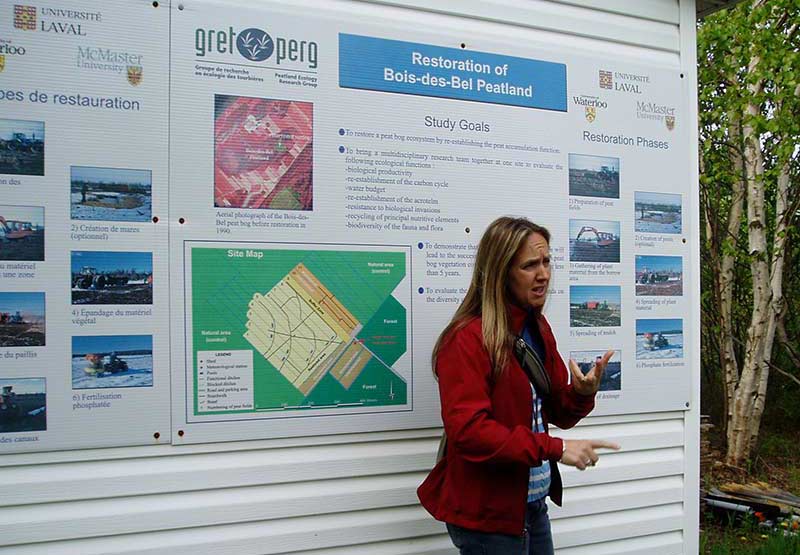
The graduate student looked at the effect of the ditches, where there would be more water. She determined the per square meter methane emissions to be 4.4 g C m-2 yr-1 and export of DOC to be in the order of 7 g C m-2 yr-1. If you subtract these C emissions from the annual uptake of CO2 of 90 g C m-2 yr-1, there is still a positive. According to most of the literature, natural peatlands sequester carbon at a rate of 25 g C m-2 yr-1. So, our relatively young, regenerated peatlands, which are usually wetter than most natural peatlands, are doing quite well. We just had a paper about this accepted in Global Change Biology with minor comments, so it should be published soon. We also hope to have a paper coming out in the future which will define more precisely when the switch to carbon sink happens in a restored peatland.
For readers who are unfamiliar with the Bois-des-Bel peatland, can you describe it and explain its importance to the study of peatland restoration?
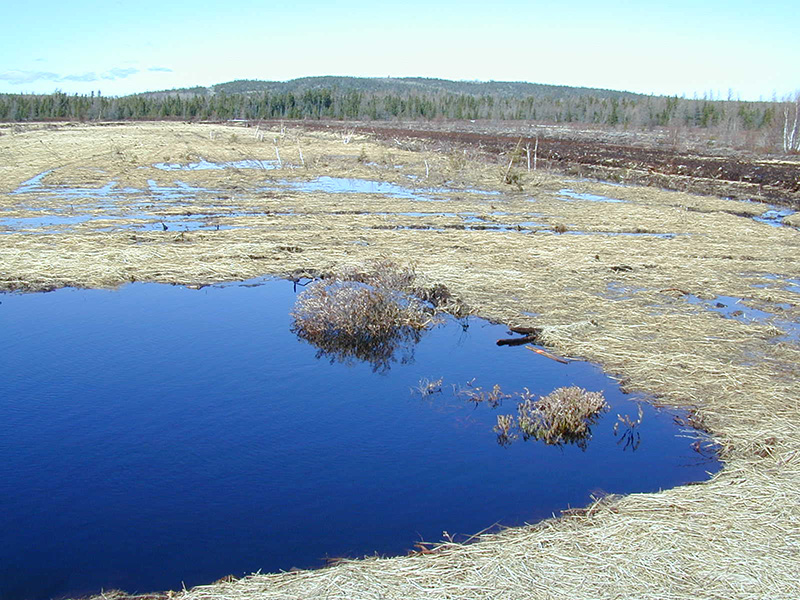
Pre-2000, Dale Vitt and I did a lot of small-scale experimentation on the biology and propagation of Sphagnum, but no one else had really done that type of work. By end of the 1990s, after doing a lot of small scale experimentation, we were ready to scale up to the ecosystem level. I had been looking all over Canada for an abandoned peat extraction site where we researchers could be free to try everything we wanted to try. We found an 11-hectare site that had been extracted from for 12 years, abandoned for 16 years, and given to the city of Rivière-du-Loup by the peat company that owned it. The Bois-des-Bel site became our first whole ecosystem experimental research station. We studied the plant community, hydrology, microbiology, and function before restoration in 1999 and began the restoration in 2000. A lot of researchers throughout Canada came to do work there (on topics ranging from virus, to mesofauna, insects, amphibians, birds, and micromammals). It is important because it is only two hours from Quebec City, open to the public, and easy for people to visit. It has boardwalks, signage, and an education facility. People interested in peatlands and peatland restoration can easily visit it.
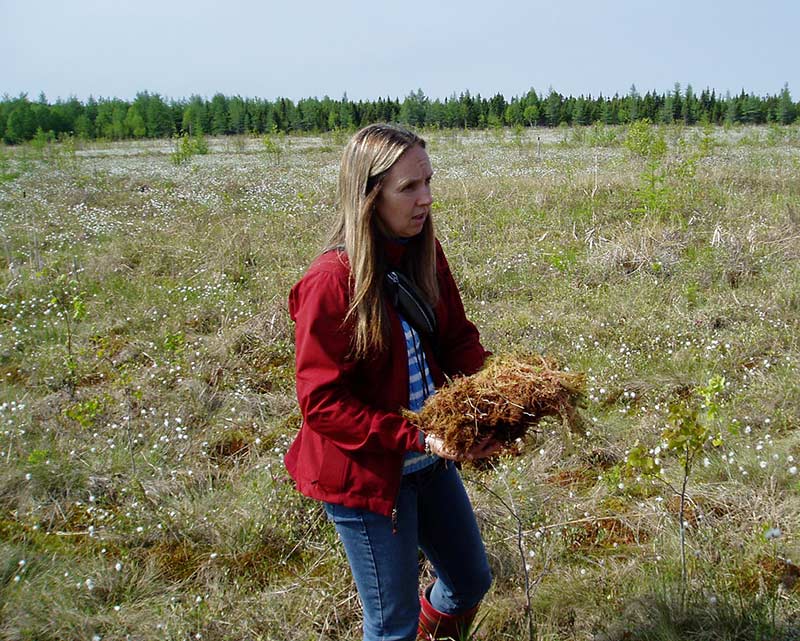
Research on peatland restoration is a relatively new field. In 2017, you and Roxane Anderson put together a special section of the journal Restoration Ecology which looked back at 30 years of restoration research and 15 years of large-scale restoration projects. In your introductory article for that section, you ask, “Have these restored peatlands really become boggy, mossy places? “ Have they?
Yes, a good 75% of our projects are on a good path to becoming carbon sequestering, functioning ecosystems again. The good news about the 25% that have not worked so well, is that we have learned a lot about the factors that influence success.
The most important factor is the importance of following the instructions of the Restoration Guide Book. We found that management can explain much of the failure. This can happen when ecological restoration is not your main activity, as is the case with the peat industry. They may spread the material, and then the crew is asked to do something else, or the union will go on strike, and the straw mulch won’t be spread until one year later, or the ditches won’t be blocked until two years later. But this is good news: if we just work better, we can reach a higher level of success.
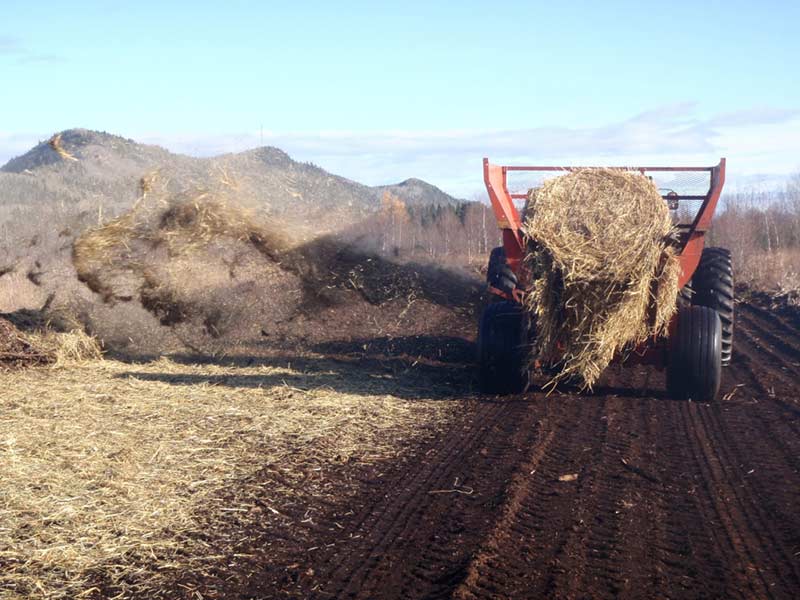
The second factor, which is not controllable, is the weather. If it’s very dry or windy, the straw mulch will provide some protection, but the little, developing mosses take a very hard hit. The third factor is the landscape. If the land use surrounding the peatland to be restored is agriculture with lots of drainage, it’s going to be a lot harder to restore than a site surrounded by forest.
The industry has reacted to these findings, and they want to have a bigger technical transfer program. The method I have developed is simple and robust, but there are a lot of little things to take care of.
In that same article, you also ask, “Are there global trends in peatland restoration which can help us align our efforts and maximize our chances of success?” Are there other places in the world where you see promising trends?
We all have different approaches. In Europe, for example, people thought it was a good idea to work through inundation, but they realized that they were creating lakes that stayed lakes for a long time. Slowly, more people are adopting the approach we have been taking in North America, being to think about plant reintroduction. But all over the world, the most important thing we can do to protect and restore peatlands is to minimize drainage and, where we can, block and stop drainage.
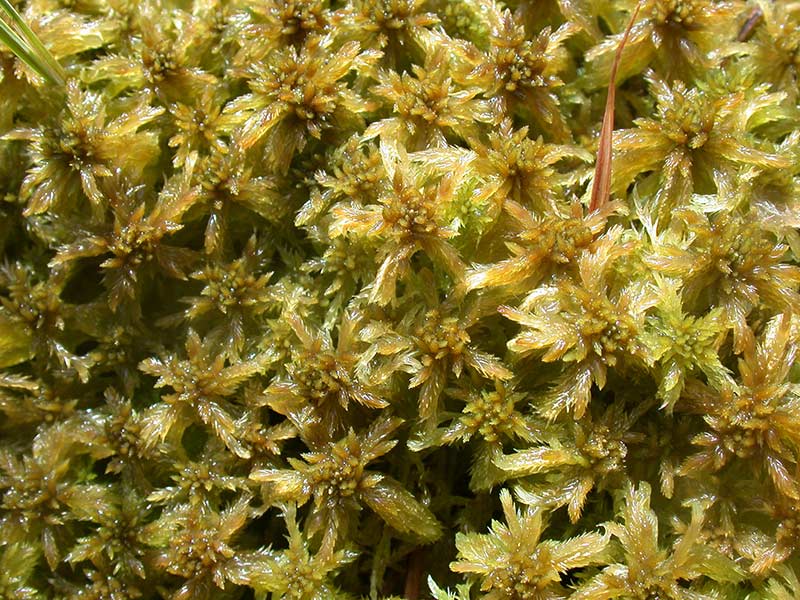
You co-authored an article in that collection of reports, “An overview of peatland restoration in North America: where are we after 25 years?” In that article, you mention some of the challenges of restoring peatlands that have been disturbed by oil sands extraction and hydrofracking (Toxins in process water and contaminated flowback). You have expanded your work to include the restoration of wetlands in the region of Alberta where oil sands are exploited. What are you learning about this type of peatland restoration?
I’m learning it’s more costly! There is more material to move. There are so many linear disturbances associated with oil sands resource extractive activities. You have seismic lines, exploration pads, extracting well pads, pipelines, winter roads, etc.
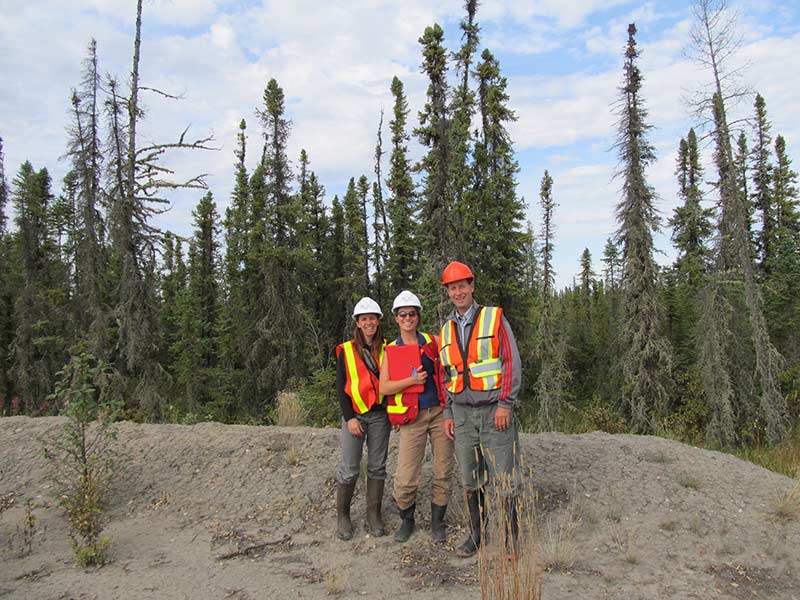
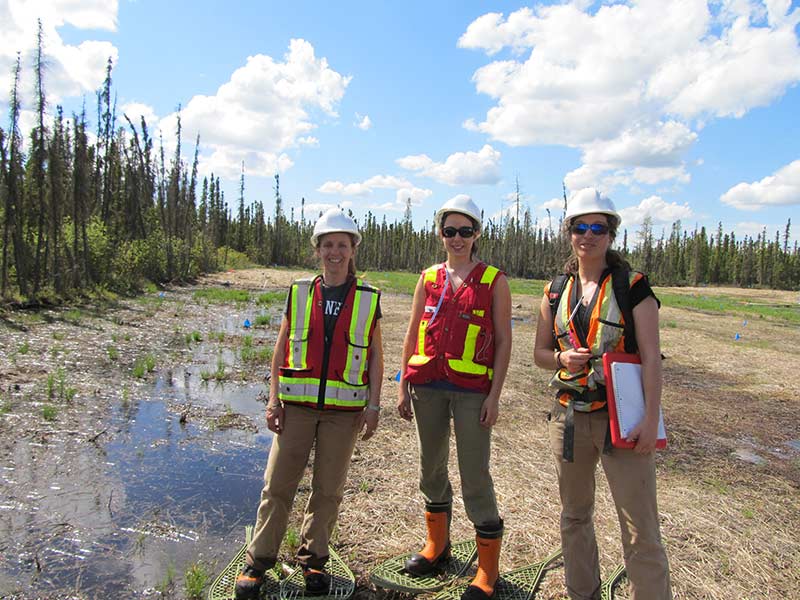
The article also identifies many gaps in knowledge when it comes to peatland restoration. Among those gaps, what do you think are the most important to fill?
There aren’t a lot of papers out there on how to do fen and swamp restoration so that is a great research need. We need to know more about the ecophysiology of brown mosses, what we call the “true mosses” (Phylum Bryophyta), which form peat in fens. They do not easily come back to a disturbed peatland. I have tried some of the same methods I used for Sphagnum, but when I scale up, I do not have the same rate of success. I’m going back to try to determine the environmental constraints to their establishment so I can determine what is needed to facilitate their return.
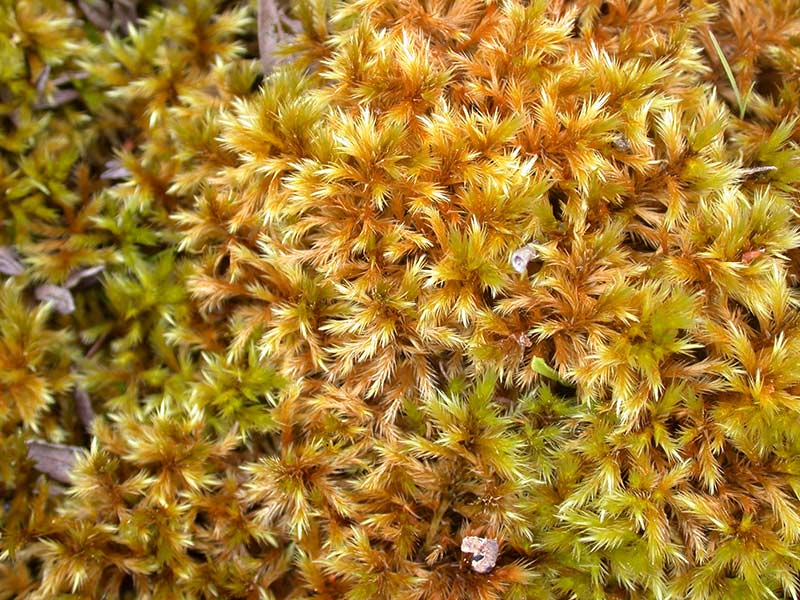
Part of my current research program is now focused on fens. We have not solved all of the problems. So far, we have been all across the Northwestern Territories and northern Alberta where there were big peat fires in 2012 and 2015. I’m starting the way I did 20 years ago with Sphagnum peatlands-just studying what Nature does and what is helping to nurse the late successional. We have identified a couple of mosses that act to nurse the next generation of mosses. I need to do more experimentation with peat accumulating fen plants before we can do a lot of scaling up.
According to information on the International Peatland Society web site, the total area of peatland in Canada is more than 1.1 million km2, an amount “greater than that of any other country.” I read in your paper that at least in eastern Canada, peatlands are protected as ecological reserves. Generally speaking, is there a greater awareness of the importance of peat in Canada than in the U.S.?
People appreciate them for moose hunting and blueberry picking! First Nations use them for medicinal plants, berries, and Labrador tea (Ledum groenlandicum). But we still need ecological reserves and we still need more awareness about the great benefits they bring to our water quality and our climate (its cooling effect).
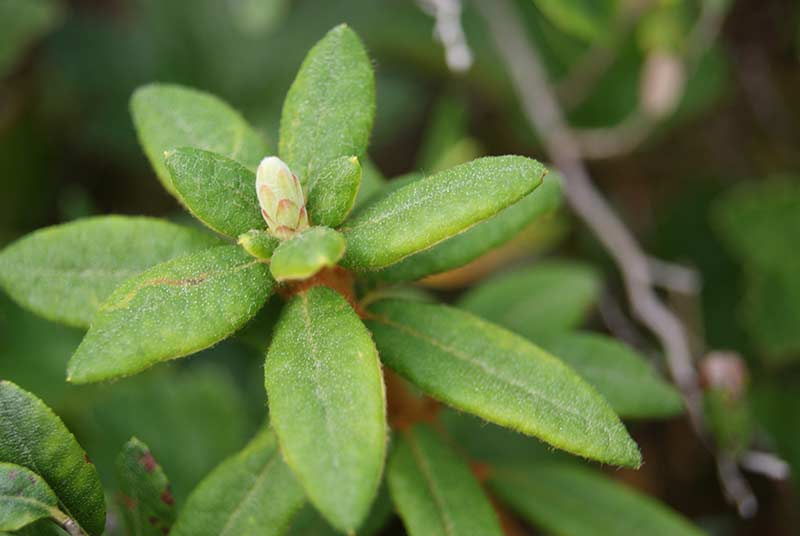
We have a very big peatland reserve within Kouchibouguac National Park in New Brunswick. Since 1978, we have been working on a 5.5-square-kilometer peatland reserve located just 25 minutes from the center of Quebec City – the beautiful Grande Plée Bleue with hundreds of pools (hence the name blue).
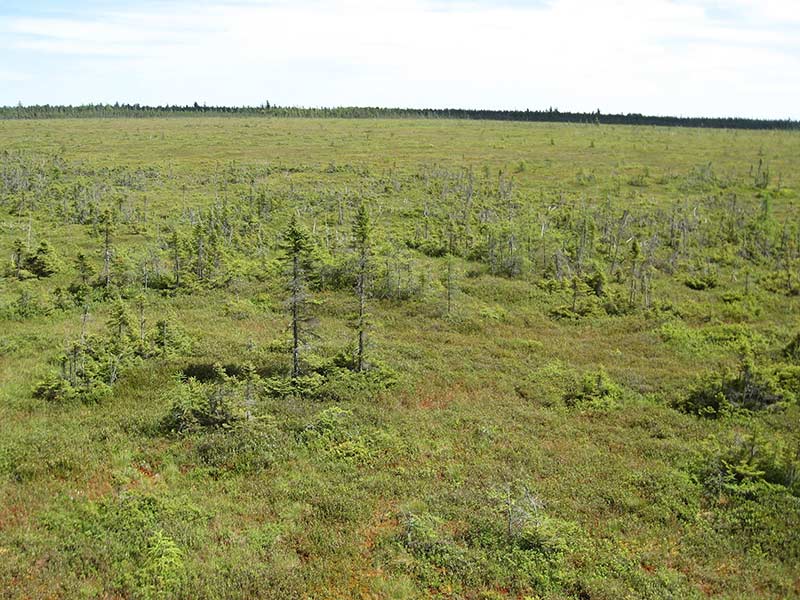
Many of our readers are involved, either directly or indirectly, with the landscaping industry. How much is the extraction of peat for horticulture contributing to the degradation of peat (in North America and globally)?
The 1.1 million hectares of peatlands you just mentioned was determined by mapping that was done a long time ago. More recent estimates, which take into account forested peatlands that may have been mistaken for black spruce forests, put that number circa 1.7 million hectares. But let’s take the more conservative estimate of 1.1 million hectares. The peat industry works on 29,744 hectares (including past extraction). That’s 0.03% of the resource. We have a lot of the resource, we are using a small quantity, and we have developed very good methods to restore it. Because of its cellular structure, peat is very efficient at what it does, and it is a hard product to replace. It is also important to consider the life cycle analysis. In fact, the peat industry just decided to fund a five-year study to look at the fate of peat that is used in North America. Peat that is extracted for horticulture can be composted after it is used, unlike a synthetic substance like rock wool. Say you use an alternative like coco fiber from Sri Lanka. Well, that has to be shipped in on old, big boats that use a lot petrol.
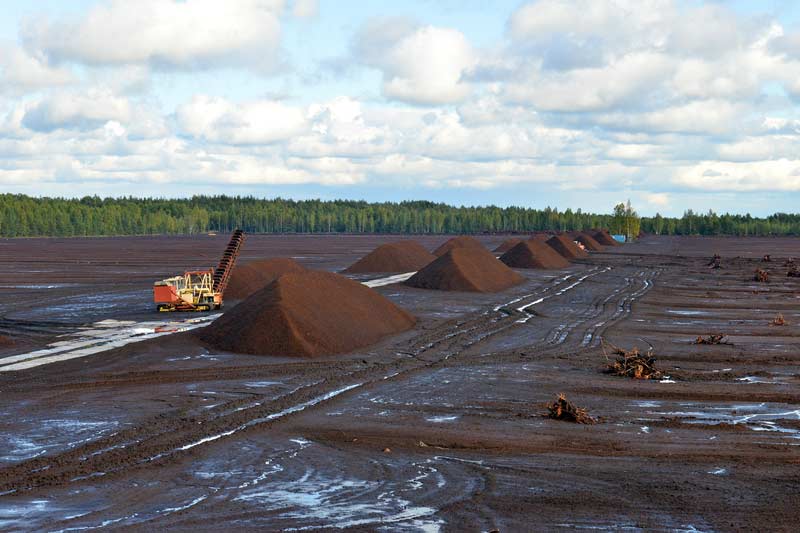
But again, this is in North America. In other areas of the world, the situation is very different. The Netherlands used to have one million hectares of peatland and they have destroyed almost all of it. In England, they have destroyed 98% of the lowland raised bogs. In places like that, you have to stop extracting peat.
